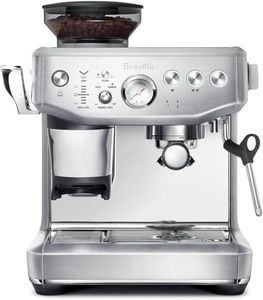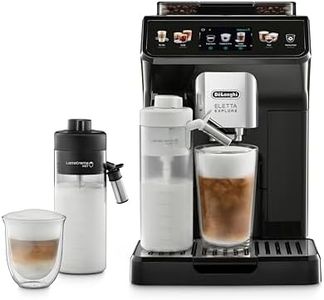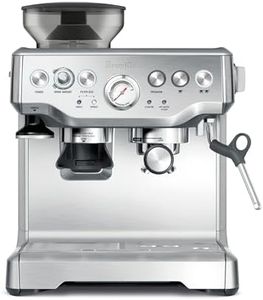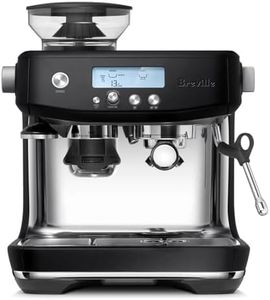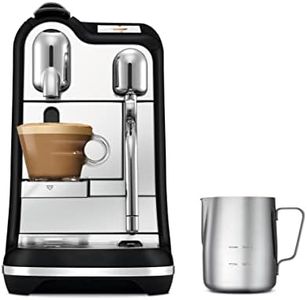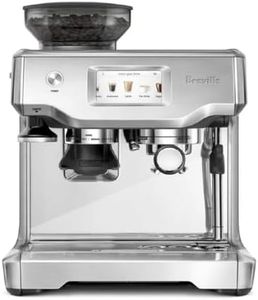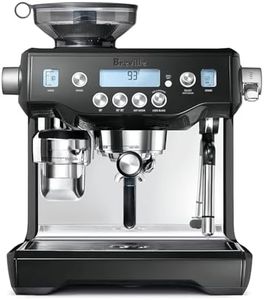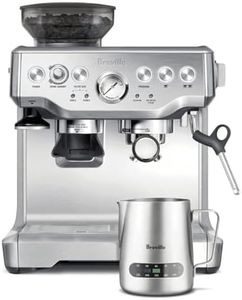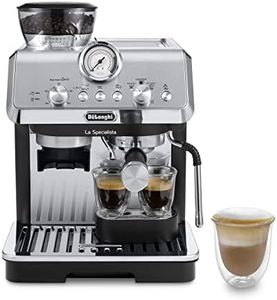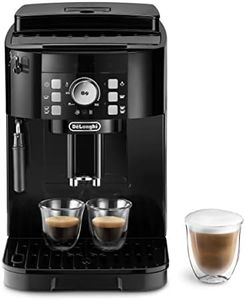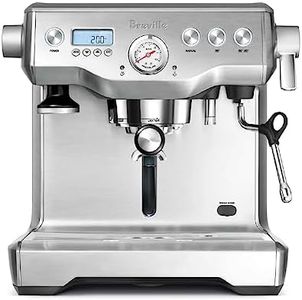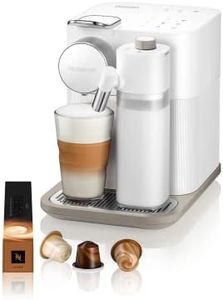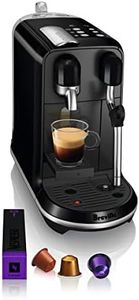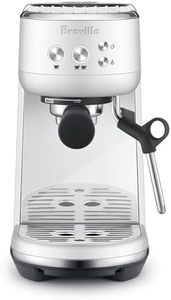We Use CookiesWe use cookies to enhance the security, performance,
functionality and for analytical and promotional activities. By continuing to browse this site you
are agreeing to our privacy policy
10 Best Espresso Machine
From leading brands and best sellers available on the web.By clicking on a link to a third party's website, log data is shared with that third party.
Buying Guide for the Best Espresso Machine
When shopping for an espresso machine, it's important to focus on your needs, preferences, and how much effort you want to put into the brewing process. Espresso machines vary widely in their features and level of involvement—some do almost everything for you, while others require more hands-on work but let you control every detail. Start by thinking about how often you'll make espresso, whether you want to learn barista skills, and how much counter space you have available. Then, use the following key specs to compare machines and find the best fit for you.Type of MachineThe type of espresso machine defines how automated the brewing process is and how much control you have. There are manual machines, semi-automatic, automatic, and super-automatic models. Manual machines give you full control but require skill and practice, making them suited for enthusiasts. Semi-automatic machines automate some steps but leave tamping and brewing control to you, which is ideal if you want a balance between involvement and convenience. Automatic and super-automatic machines handle nearly everything, from grinding to brewing, and are great if you want fast, easy espresso without much effort. Decide how hands-on you want to be to choose the right type.
Boiler Type and Heating SystemThe heating system affects how quickly the machine is ready and how stable the brewing temperature is. Machines may use single boilers, dual boilers, or heat exchange systems. Single boilers do one thing at a time, so you have to wait between brewing and steaming milk. Dual boilers allow you to brew and steam milk simultaneously, making them good for frequent milk drinks or serving guests. Heat exchange systems offer a middle ground. If you mostly drink straight espresso, a single boiler might be enough. If you like milk drinks or entertain guests, dual boilers or heat exchange systems are more convenient.
Pump PressurePump pressure is what forces water through the coffee grounds to make espresso. It's measured in bars, and 9 bars is considered the ideal for good espresso extraction. Many machines advertise higher pressures, often 15 bars or more, but the important thing is that the machine can reliably reach and maintain at least 9 bars during brewing. For most people, as long as the machine meets this standard, the specific number above that is less critical.
Integrated GrinderSome espresso machines come with a built-in grinder, while others require you to buy a separate one. Having an integrated grinder saves space and makes things easy, especially for beginners, but separate grinders usually offer better grind control and quality. If you want convenience and have limited space, look for a model with a built-in grinder. If you want to experiment with different coffee beans and grind settings, consider a machine without a grinder and get a separate, high-quality one.
Steam WandA steam wand is used to froth milk for drinks like cappuccino or latte. Quality and adjustability of the steam wand make a big difference in the texture of your milk. Some machines have manual wands, letting you practice and create café-style microfoam, while others use automatic frothers, which make things easier but give you less control. Think about whether you want to learn steaming skills or prefer one-touch convenience when considering this feature.
Water Tank CapacityWater tank size determines how often you'll need to refill it. Small tanks are fine for occasional use or if space is tight, but larger tanks are better if you'll be making drinks for several people or don’t want to refill often. Choose a size that matches how much coffee you expect to make each day and how much counter space you have.
Ease of CleaningCleaning and maintenance keep your espresso machine working well and your coffee tasting good. Some machines have features like removable drip trays, dishwasher-safe parts, or automatic cleaning cycles that make upkeep easier. If you want less hassle, look for these features. If you don’t mind extra cleaning for more control over brewing, you can be flexible. Think about how much time you want to spend on maintenance before you decide.
